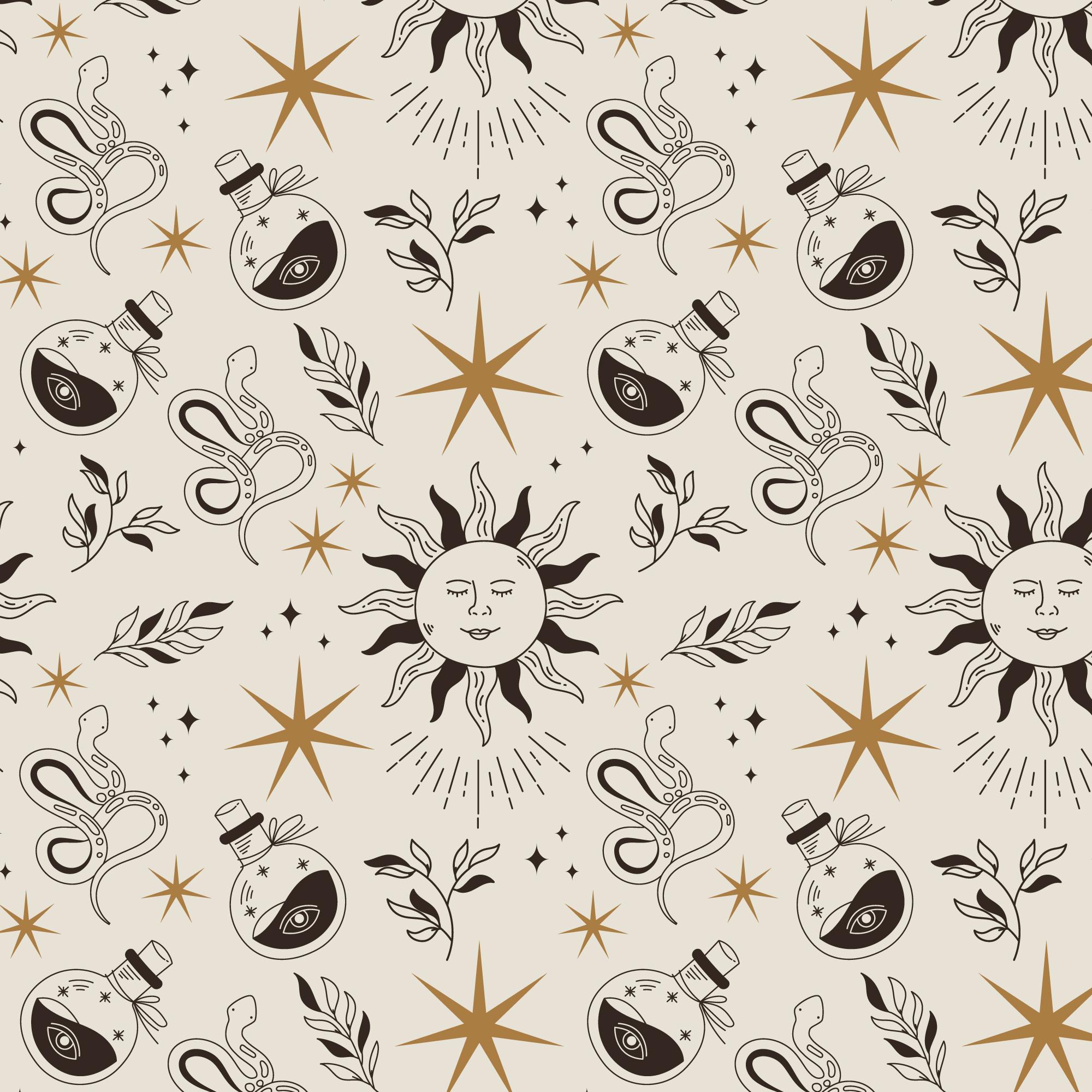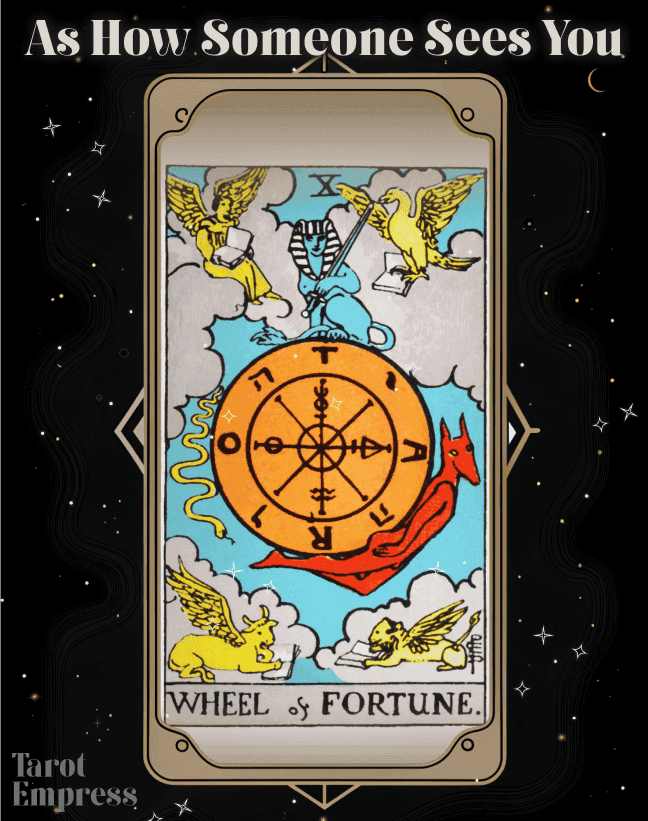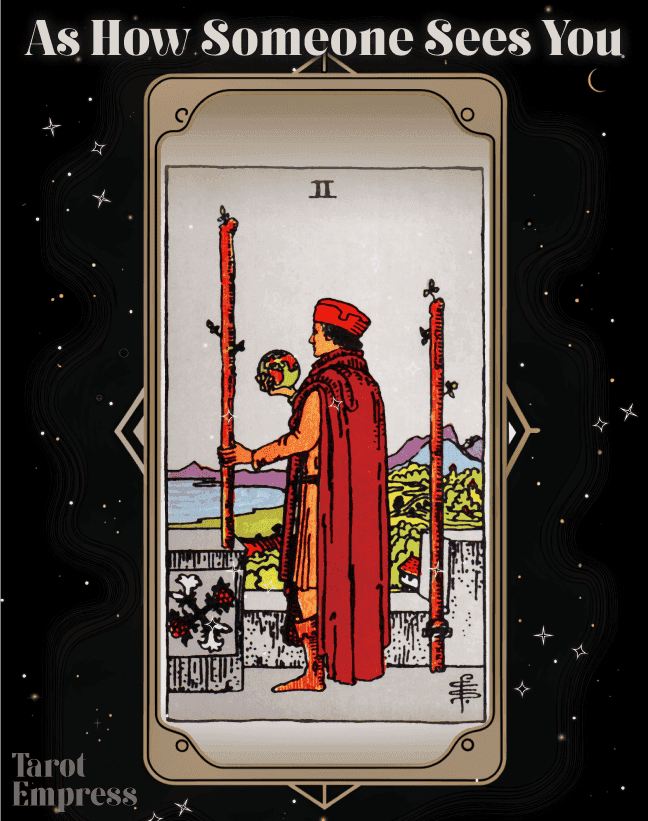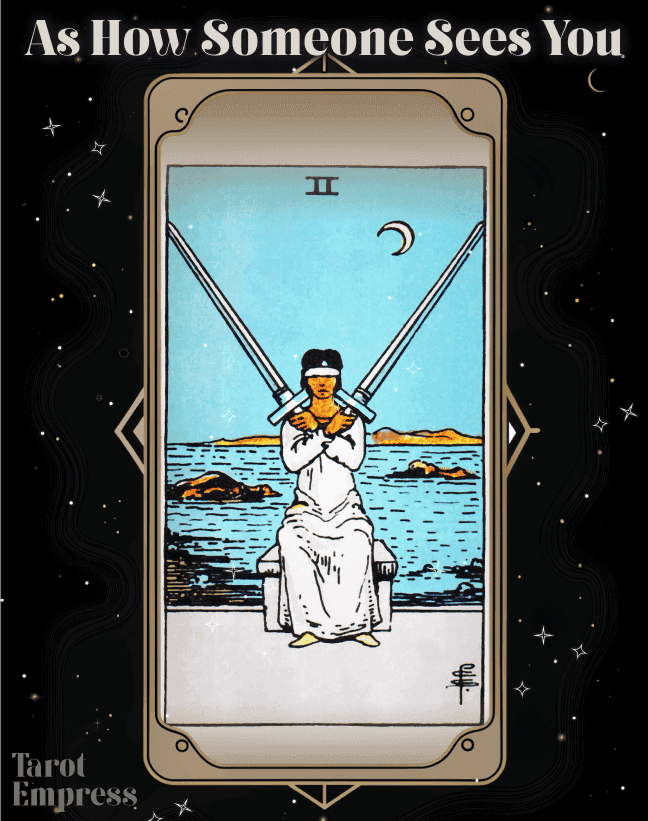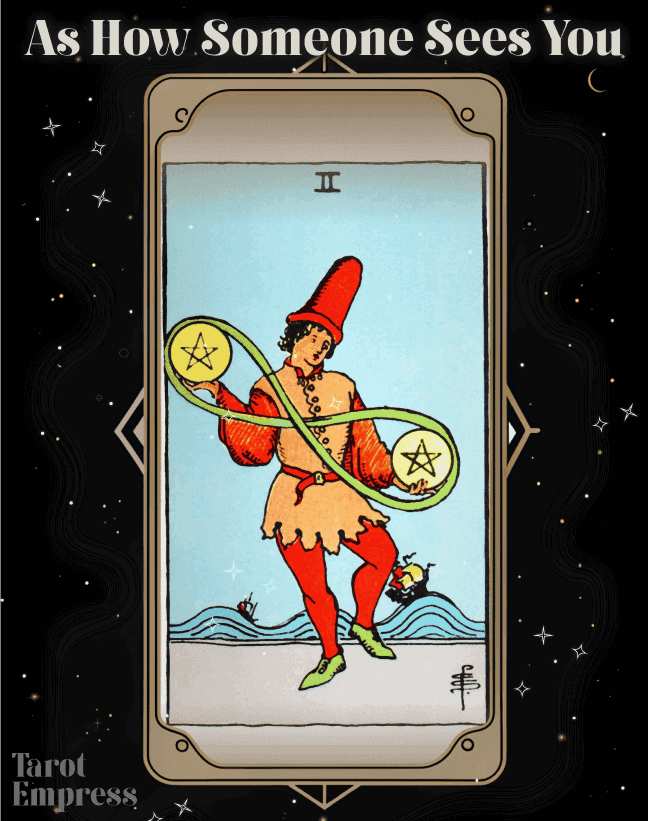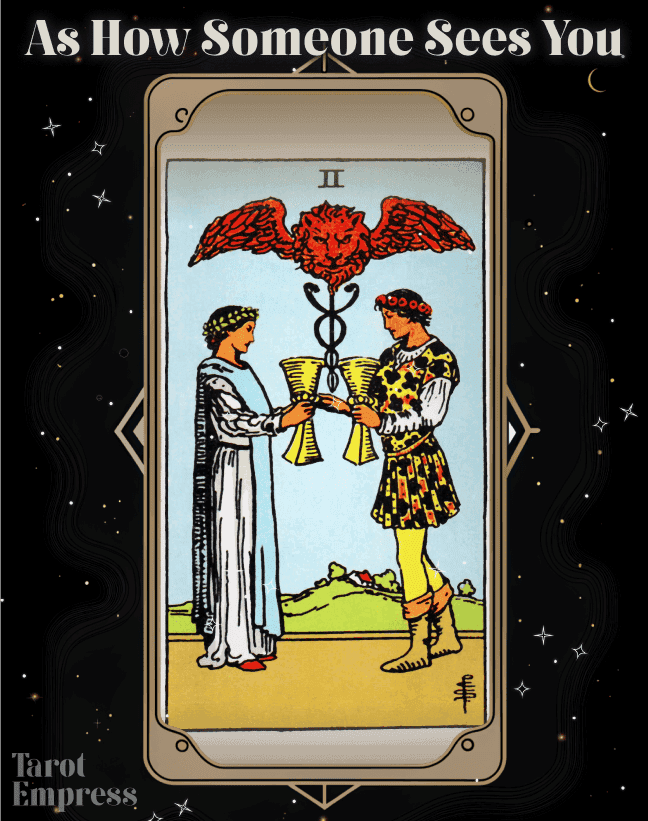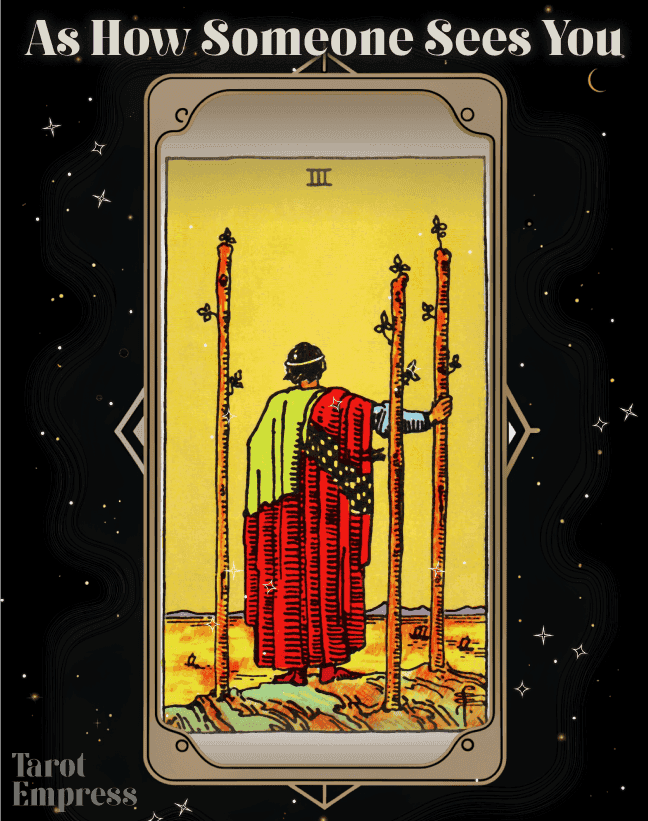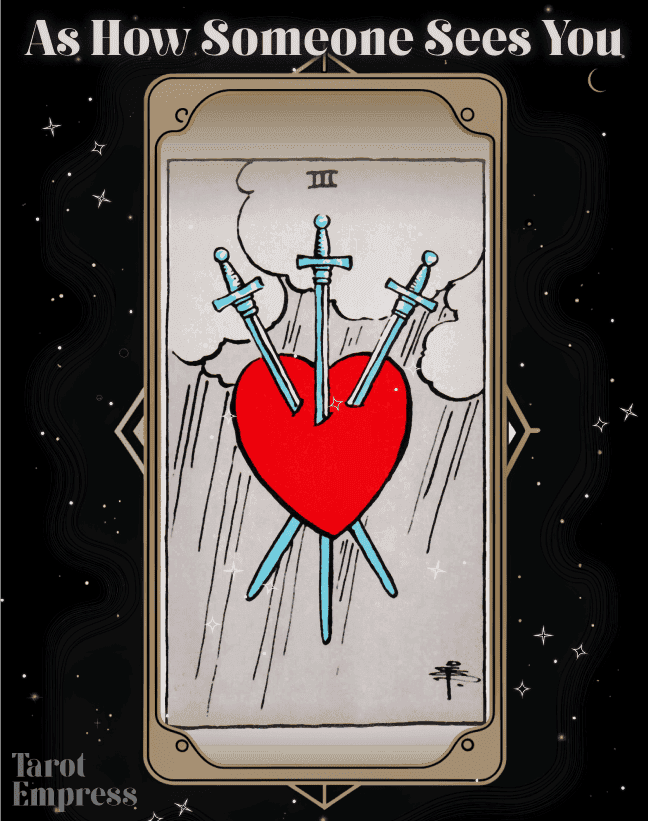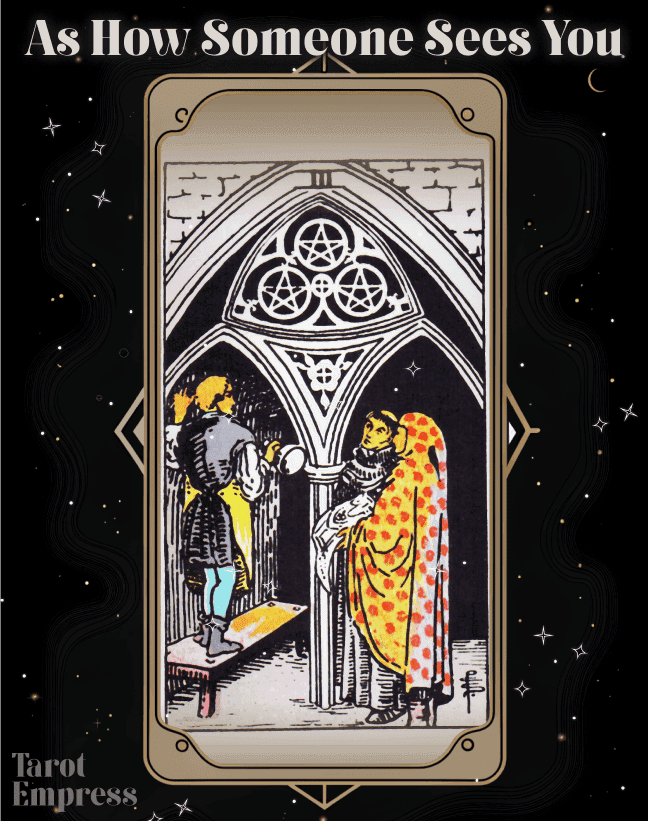Table of contents
When the Death card appears in a tarot reading concerning how someone perceives you, it can evoke a myriad of emotions and thoughts. This powerful card, often misunderstood, heralds transformation, endings, and new beginnings. In the context of personalized interpretations, it's crucial to grasp the profound and multifaceted meanings of the Death card, both upright and reversed, to appreciate how you are seen by others. This exploration will offer insights into relationships, career, and personal growth.
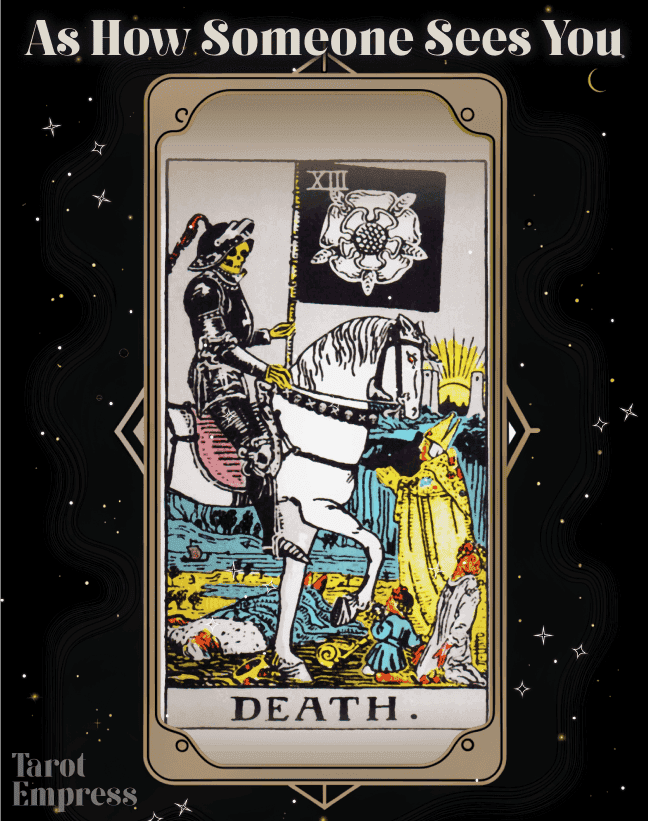
Key Meanings of the Death Card as How Someone Sees You
In tarot, the Death card is anything but mundane. It's a symbol of endings, change, transition, and regeneration. These themes influence how someone perceives you through the lens of the Death card, which goes far beyond the literal interpretation of mortality.
Symbols of the Death Card
- Scythe: Represents cutting off old habits, relationships, or a way of life.
- White Horse: Symbolizes purity in the process of transformation.
- Rising Sun: An indication of new beginnings and hope.
- Skeleton: The aspect of clearing away what no longer serves you to make room for the new.
The Death card does not signify finality but transformation. It's about shedding old layers and stepping into a new phase. When seen through the eyes of others, this card signifies a vision of you as a catalyst for change, someone who embraces transitions and is unafraid to let go of the past.
Death Upright: How Someone Sees You
When the Death card appears upright, it paints a picture of you as a harbinger of transformation and renewal. People may see you as someone who initiates change or facilitates growth, often being the force that propels others out of their comfort zones.
What does Death say about how they see you? Our Tarot experts can tell you.
Relationships
For Singles
For singles, the upright Death card suggests that you are perceived as someone capable of sweeping changes. Your presence is a signal that old patterns must be abandoned to make way for new, healthier dynamics.
- Catalyst for Change: People might view you as an individual who encourages them to evolve.
- Intense Connection: There's a sense of deep, transformative connection when someone meets you.
- Renewal: They see you as someone who brings renewal and revival to their life.
For New Relationships
In the context of new relationships, being seen as the upright Death card means you are viewed as a refreshing change. Your tendency to embrace new experiences might make others feel like they are embarking on a new, transformative journey with you.
- Excitement: You bring a sense of excitement and novelty.
- Empowerment: You empower your partner to leave behind old baggage.
- Resilience: Seen as someone strong and resilient, capable of weathering life’s transitions.
For Existing Relationships
In longer-term relationships, the upright Death card can mean that you are seen as someone who fosters growth and renewal. Your partner might view you as the anchor that helps navigate through life’s inevitable changes.
- Evolution: Viewed as someone who supports continuous personal and relational growth.
- Stability Through Change: Seen as a stabilizing force during times of transition.
- Inspiration: Inspire your partner to embrace change and growth.
For Exes
For exes, the upright Death card suggests you are remembered as someone who instigated significant change. Whether your past relationships ended amicably or not, your ex-partners might see you as someone who played a pivotal role in their transformation.
- Life-Changer: Remembered as a life-changer who prompted necessary endings.
- Teacher: Seen as a teacher of vital life lessons.
- Healing Presence: Might be viewed as someone who ultimately brought healing through transformation.
Career
Within a career context, the upright Death card signifies perceptions of you as an innovative and transformative presence. You might be seen as a visionary, someone who is unafraid to challenge the status quo and bring about significant changes.
- Innovative Thinker: Seen as someone who brings novel ideas and solutions.
- Change Agent: Viewed as a catalyst for organizational change.
- Leader: Seen as a leader who can guide others through transitions.
Friendship
In friendships, the upright Death card indicates you are seen as an influencer of personal growth. Friends might perceive you as someone who encourages them to let go of what no longer serves them and to embrace new beginnings.
- Supportive: Seen as a supportive presence during times of change.
- Motivator: Viewed as someone who motivates friends to improve themselves.
- Trusted Advisor: Valued for your insights into personal growth and transformation.
Self-Perception
When you see yourself through the upright Death card, you recognize your own power to transform and renew. You understand that you are continuously evolving and that you have the strength to let go of the past to embrace new opportunities.
- Self-Awareness: Awareness of your transformative power.
- Resilience: Acknowledgment of your ability to navigate through life’s changes.
- Growth-Oriented: Focused on personal and spiritual growth.
Death Reversed: How Someone Sees You
When the Death card appears reversed, it brings attention to misunderstandings, resistance to change, or an inability to let go. These attributes can impact how others see you, often signifying a perception of stagnation or fear of transformation.
What does Death say about how they see you? Our Tarot experts can tell you.
Relationships
For Singles
For singles, the reversed Death card might indicate that others see you as someone who is stuck in old patterns. Potential partners could feel that you have unresolved issues from the past that are hindering your ability to move forward.
- Stuck in the Past: Seen as someone who is reluctant to move on.
- Fear of Change: Perceived as fearful of new beginnings.
- Unresolved Issues: Potential partners might sense unresolved emotional baggage.
For New Relationships
In new relationships, a reversed Death card suggests that you might be perceived as resistant to the changes necessary for growth. Your new partner might feel that you are holding on to old habits or experiences that prevent the relationship from evolving.
- Resistance: Seen as resistant to the natural evolution of the relationship.
- Clinging to the Old: Perceived as someone who clings to the past.
- Barrier: Viewed as a potential barrier to the relationship’s growth.
For Existing Relationships
In established relationships, the reversed Death card can indicate that your partner sees you as having difficulties with change. This might lead to perceptions of the relationship being stagnant or not progressing.
- Stagnation: Perceived as leading to a stagnant relationship.
- Reluctance: Seen as reluctant to embrace necessary changes.
- Impediment: Viewed as an impediment to mutual growth.
For Exes
Ex-partners might see the reversed Death card as a sign that you were unable to let go of past grievances or issues, resulting in a challenging relationship dynamic.
- Stuck: Seen as someone stuck in hurtful patterns.
- Unresolved Residue: Perceived as carrying over unresolved issues into the present.
- Challenging: Remembered as a particularly challenging relationship.
Career
In the professional realm, the reversed Death card signifies perceptions of you as resistant to change or unable to adapt. Colleagues or employers might see you as someone who hinders progress or resists new initiatives.
- Change-Averse: Seen as averse to change and new methods.
- Stagnant: Perceived as someone whose career is at a standstill.
- Inhibiting Growth: Viewed as inhibiting organizational growth and innovation.
Friendship
For friendships, the reversed Death card indicates a perception of being stuck in old ways. Friends might see you as someone who is unwilling to grow or let go of outdated dynamics.
- Resistance: Seen as resistant to evolving within the friendship.
- Holding On: Perceived as holding on to past grievances or comfortable patterns.
- Unyielding: Viewed as unyielding in the face of necessary change.
Self-Perception
How you see yourself through the reversed Death card can be indicative of your own knowledge of resistance to change and growth. You might recognize your own fears about letting go and the challenges you face in embracing new beginnings.
- Self-Realization: Awareness of your resistance to change.
- Growth Barrier: Recognition of barriers you place against personal growth.
- Fear: Understanding of your own fears regarding transformation.
Death as How He Sees Me
When interpreting how the Death card reflects his or her perception of you, context is everything. The upright and reversed positions of the card yield different insights into how you are seen by a significant other.
Upright: Embracing Transformation
In an upright position, the Death card suggests that he or she sees you as an agent of transformation. You might be viewed as a pivotal figure who encourages profound personal and relational change.
- Positive Change: Seen as someone who brings positive and necessary transformations.
- Influential: Viewed as a substantial influence in their life journey.
- Courageous: Perceived as courageous in facing and initiating change.
Reversed: Resistance to Growth
In the reversed position, the Death card highlights areas of friction, especially concerning change and adaptability. He or she may see you as someone who struggles with letting go or adapting to new situations.
- Hesitant: Seen as hesitant to embrace new phases of the relationship.
- Reluctant: Perceived as reluctant to face and induce changes.
- Challenge: Viewed as a challenge in making necessary relational shifts.
Practical Insights
Understanding how the Death card is perceived by someone special in your life can provide guidance on how to navigate these perceptions. Awareness of this perspective can help address misunderstandings and improve relational dynamics.
- Reflect on Stagnation: If seen as resistant to change, consider areas where you can demonstrate flexibility.
- Embrace New Beginnings: Show your willingness to phase out dated patterns and embrace growth.
- Communicate: Open channels of communication to discuss changes and transitions.
Insights on Personal Reflections
Reflecting on how the Death card impacts self-perception and personal growth can be particularly enlightening. This introspection can lead to transformative changes and new understandings.
Upright: Embracing New Phases
Seeing yourself through the upright Death card emphasizes your capacity for renewal and transformation. It reaffirms your strength to let go and your ability to embrace new opportunities. This self-awareness fosters resilience and continuous growth.
- Celebrate Growth: Acknowledge your progress and evolution.
- Empowerment: Feel empowered by your ability to face and engender change.
- Resilience: Recognize your inherent resilience in navigating transformations.
Reversed: Confronting Resistance
Self-reflection on the reversed Death card can reveal areas where you resist change. This awareness invites you to confront fears and barriers that hinder personal growth.
- Identify Fears: Recognize what you are afraid to let go of.
- Growth Blocks: Understand the barriers you create against your own growth.
- Steps Forward: Develop strategies to overcome these resistances and welcome change.
Practical Steps for Embracing and Addressing Perceptions
- Mindful Awareness: Practicing mindfulness can help you stay present and open to change.
- Journaling: Regular journaling about your fears and growth can aid in understanding and addressing resistances.
- Seek Support: Therapists, life coaches, or spiritual advisors can provide guidance and support through transitions.
Answering Questions of What Someone Thinks of You with the Death Card
When the Death card appears in "What Someone Thinks of You" questions, it offers nuanced insights. Effectively framing these questions can illuminate how perceptions are formed and how they can influence your interactions.
Upright Example Questions
- What transformations do they believe you have undergone recently?
- How do they see you as a catalyst for change in their life?
- What new beginnings do they associate with you?
Reversed Example Questions
- What past issues do they think you’re struggling to let go of?
- How do they believe your resistance to change affects your relationship?
- In what ways do they see you as hindering progress?
Embracing Perceptions and Transformations
As we conclude our exploration, it's evident that the Death card's presence in a reading about how someone sees you highlights valuable aspects of perception and personal growth. Whether upright or reversed, the Death card signifies undergoing or resisting transformation, which deeply influences relationships, career, and self-perception. Understanding these dynamics can empower you to foster meaningful connections, embrace change, and navigate life's transitions with wisdom and grace.
By recognizing and addressing these perceptions, you can continue your personal journey with greater insight and intentionality, embodying the true spirit of transformation that the Death card represents.
FAQs
What does Death as how someone sees you signify in a tarot reading?
When the Death card appears as how someone sees you, it signifies their perception of you as a transformative force. They may see you as someone who brings significant change, fosters growth, and encourages letting go of the past to make way for new beginnings.
How does the Death card reversed as how someone sees you differ from the upright position?
The Death card reversed as how someone sees you suggests resistance to change and an inability to let go of old patterns. Unlike the upright position, which highlights transformation and renewal, the reversed position indicates a perception of stagnation or fear of transition.
How does the Death card reflect on how he sees me in a relationship context?
When considering the Death card in the context of how he sees you, it reflects a view of you as a significant catalyst for change. Upright, it means he sees you as someone who inspires growth and transformation. Reversed, it might indicate he perceives you as resistant to necessary changes within the relationship.
What insights does the Death card offer regarding what someone thinks of you?
The Death card in a reading about what someone thinks of you offers insights into their perception of you as an agent of transformation. Upright, it suggests they view you as someone who encourages them to let go of the past and embrace new beginnings. Reversed, it indicates they may think you are struggling with letting go and are resistant to change.
How does the Death card influence how someone sees you physically?
The Death card influencing how someone sees you physically may not relate directly to physical appearance but rather to the energy and transformation you bring into their life. They might perceive you as someone who radiates the power of change, shedding old layers, and embracing new beginnings.
How can I interpret the Death card in a tarot reading about how someone sees me?
Interpreting the Death card in a tarot reading about how someone sees you involves understanding its symbolism of transformation and renewal. Upright, it means they see you as a positive force for change. Reversed, it suggests they view you as resistant to change, potentially hindering growth and new opportunities.
